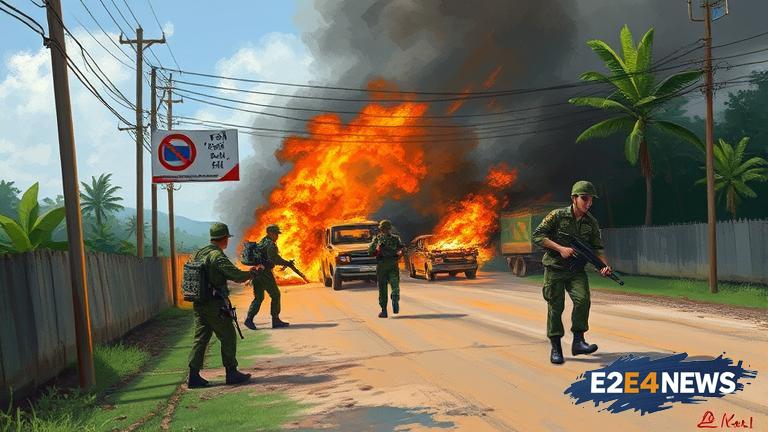The ongoing clashes between Thailand and Cambodia have entered their fourth day, with no signs of easing. The conflict, which began on February 4, has resulted in the exchange of artillery fire and small arms between the two countries’ militaries. The fighting has been centered around the disputed border area near the 11th-century Preah Vihear temple, a UNESCO World Heritage site. Both countries have accused each other of starting the violence, with Thailand claiming that Cambodian troops fired the first shots, and Cambodia alleging that Thai soldiers had crossed into their territory. The clashes have resulted in the deaths of several soldiers and civilians, with many more injured. The situation has sparked concerns about the potential for further escalation and the impact on regional stability. The Association of Southeast Asian Nations (ASEAN) has called for restraint and a peaceful resolution to the conflict. The United States, China, and other countries have also urged calm and a return to diplomatic negotiations. Despite the international pressure, the fighting has continued, with both sides dug in and refusing to back down. The conflict has its roots in a long-standing dispute over the border, which has never been fully demarcated. The Preah Vihear temple, which is situated on a cliff overlooking the border, has been a particular point of contention. In 1962, the International Court of Justice ruled that the temple belonged to Cambodia, but the surrounding area has remained in dispute. The current clashes are the latest in a series of incidents that have occurred in recent years, including a shootout in 2008 that killed several soldiers. The conflict has also had an impact on the local population, with many villagers forced to flee their homes and seek shelter in nearby towns. The economic impact of the conflict is also being felt, with trade and tourism in the region likely to suffer. The Thai and Cambodian governments have both vowed to protect their sovereignty and territorial integrity, but the international community is urging them to seek a peaceful resolution. The situation remains volatile, with the potential for further violence and instability. The international community is watching the situation closely, with many calling for a return to diplomatic negotiations and a peaceful resolution to the conflict. The ASEAN regional bloc has offered to facilitate talks between the two countries, but so far, there has been no breakthrough. The conflict has also raised concerns about the role of the military in both countries, with some critics accusing the Thai and Cambodian armies of inflaming the situation. As the situation continues to unfold, the international community is urging restraint and a peaceful resolution to the conflict. The Thai and Cambodian governments must work together to find a solution that respects the sovereignty and territorial integrity of both countries. The use of diplomacy and negotiation is the only way to resolve the conflict and prevent further violence and instability in the region. The international community must continue to pressure both sides to seek a peaceful resolution and to respect the principles of international law and diplomacy.
